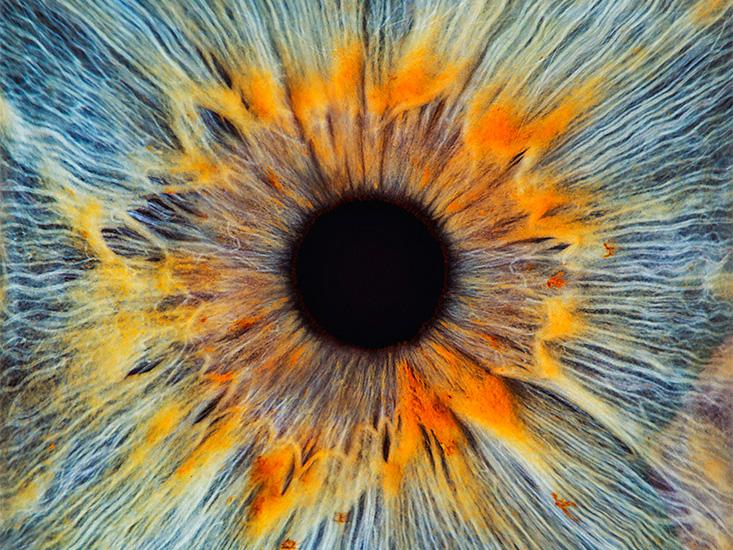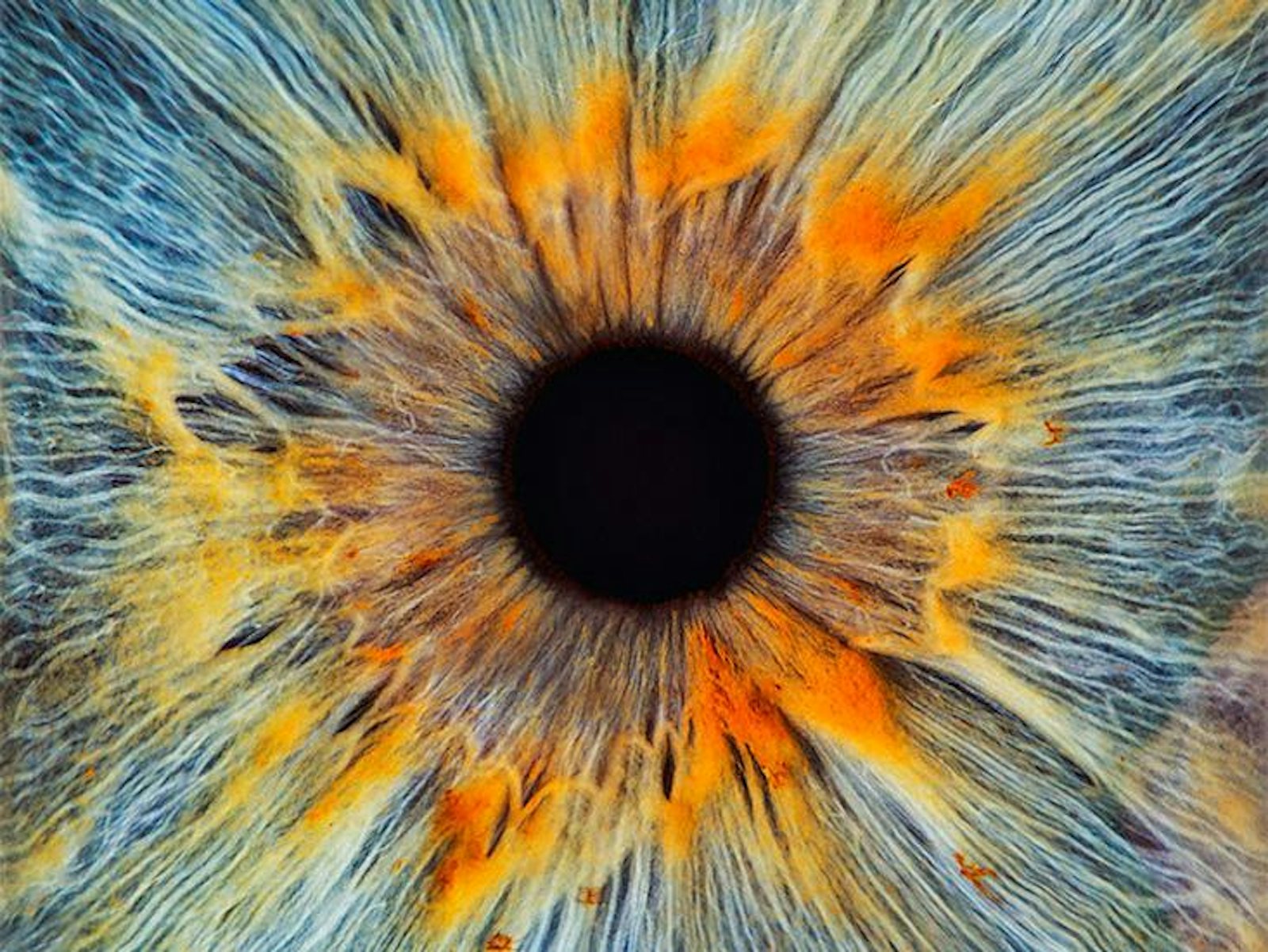In an early episode of Daredevil, Netflix’s new series about Marvel Comic’s blind superhero, there’s a telling scene in which the crime-fighting protagonist tends to an injured friend. Although he lost his eyesight in a traffic accident as a boy, Daredevil can nevertheless perceive her wounds. From across his apartment, he senses that a cut on her back has reopened because he can “taste copper in the air.” Investigating the laceration, he finds a hairline fracture in her rib by listening to her bones shift as she breathes.
She stares at him, astonished. “You see so much. How?”
It’s not just that Daredevil’s other four senses are especially heightened. As he explains to his friend, everything that he hears, smells, tastes, and feels merge in his mind’s eye as “a sort of impressionistic painting.” The camera’s viewpoint reveals his perspective: vague outlines of a woman glowing various hues of orange, as if seen through thermal goggles. Or, as he puts it, “a world on fire.”

While Daredevil’s powers are the stuff of fiction, they also echo some very real abilities of the human brain. For example, the ability to form a synthetic mental picture of one’s surroundings is actually quite common among the blind, says Emiliano Ricciardi, a cognitive psychologist at the University of Pisa. Daredevil may indeed be “exceptional,” he argues, but he’s “not too extravagant.”
Consider, for example, the late blind teenager Ben Underwood. Cancer took his eyes when he was 3 years old. But he never let his blindness discourage him from living a normal life. He played basketball and practiced karate. He learned to navigate the world by making clicking noises with his tongue and listening for their echoes like a bat—his own form of echolocation. He didn’t consider himself blind. “Ain’t nothing wrong with me,” he once remarked. (He died in 2009 at 16 from the same cancer that blinded him.)
Daniel Kish, a blind echolocator like Underwood, once described his visual perception as “something like seeing the world in dim flashes of light.”
Many blind people are even exceptional visual artists. The Turkish painter Esref Armagan, who has been blind since birth, never laid eyes on a snow-laden village or a bay bordered by bushes and flowers. Yet he is able to convincingly render each of these scenes in a blurry, dream-like style. Similarly, the sculptures of Michael Naranjo, who was blinded as a soldier in Vietnam, depict Native American tribe members and animals with remarkable realism. The works of blind photographer Pete Eckert are no less stunning. In fact, Eckert believes blindness gives him an advantage. “Vision is so strong that it masks other senses, even overrides visualization,” he once said. “Sighted photographers always talk about the difficulty of what they call ‘seeing.’ I tell them, ‘If you can’t see, it’s because your vision is getting in the way.’ ”
These Daredevil-esque talents depend on the flexibility of the human brain. A 2008 study led by Amir Amedi, Ricciardi’s colleague at Harvard Medical School, used a functional magnetic resonance imaging (fMRI) machine to peer into Armagan’s brain as he drew objects he had previously felt with his hands. When Amargan sketched these images—as opposed to shapeless scribbles—the researchers saw activity in brain areas typically associated with vision, including the striate cortex and the frontal and parietal regions of the visual cortex. The same regions were also active, although less so, when Amargan simply imagined the pictures he intended to draw. The authors conclude that touching and holding objects can generate mental images “in the absence of normal visual development.” Moreover, the visual cortex can process these images “even without prior visual experience.”
Scientists have also studied the brain of Daniel Kish, a blind echolocator like Underwood, who once described his visual perception as “something like seeing the world in dim flashes of light.” In 2011, psychologist Lore Thaler, now of Durham University, in the United Kingdom, and his colleagues found that Kish’s visual cortex lit up when he listened to echoes from his navigational clicks. When he listened to other background sounds, however, this area was silent. Kish was indeed experiencing something like vision.
Cases like these suggest that the brain has, in the language of neuroscientists, a “supramodal” organization, which means that it can process information about the environment independently of the organ that delivered it. But if blind people can “see” through sensory inputs other than light, could the same apply to smell and hearing, in a Daredevil kind of way?
Ricciardi says he would “have to think a little bit about the experimental paradigms that could be used” if he had Daredevil in his fMRI scanner. But he suspects the superhero’s cortical activity probably wouldn’t look all that different than Armagan’s or Kish’s. “For sure, the same kind of neural responses would be found in Daredevil’s brain.”
Brian Gallagher is an editorial intern at Nautilus. @brianscottg






























